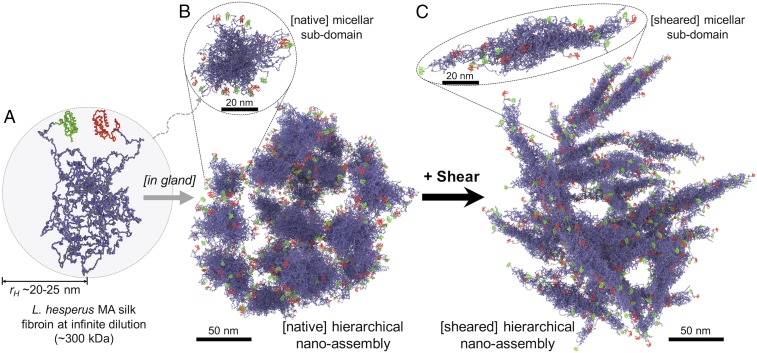Fig. 4.
Graphical interpretation of the cryo-TEM and diffusion NMR data; illustrative scheme of the modified micelle theory. (A) Spidroin monomer at infinite dilution [the building blocks for the nanoassemblies that form at native gland conditions (B)]. The C- and N-terminal domains (green and red) form helical structures, and the long, central domain (blue and gray) is in the molten-globule state (rH ∼ 20–25 nm) (8, 26–29). (B) At neutral pH and native concentration within the MA gland, the spidroin monomers assemble into small, flake-like subdomains (here shown composed of 12 monomers) that hierarchically assemble into larger, spherical micellar structures (several hundred nanometers in diameter). (C) When sheared, the initial transformations occur at the subdomain level. Individual subdomains transform into narrow, elongated fibrils that remain assembled (disordered and interwoven network) within the spherical hierarchical assemblies.

